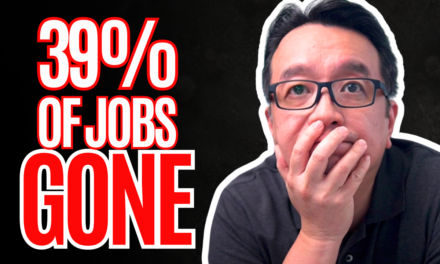
Why Tupperware Went Bankrupt: What Every Entrepreneur & Investor Needs To Know

I grew up with Tupperware.
It was a staple in my home, just like it was in millions of others. Whether it was leftovers from family dinners or packed lunches for school, those airtight, reusable containers were always there—reliable and seemingly indestructible.
The Fall of an Iconic Brand
So, it’s kinda strange to think that something so ever-present is now, well, gone.
For over 70 years, Tupperware was more than just a product—it was a household name, synonymous with convenience and durability.
But last week, this iconic brand found itself filing for Chapter 11 bankruptcy, weighed down by mounting debt and shrinking relevance in a fast-evolving market.
The Product wasn’t the Problem
And here’s the thing: it’s not like the product became irrelevant.
People still have leftovers. Sure, there are more concerns about food safety and sustainability these days, but there’s no denying that people still need reliable food storage. The product still serves a purpose, yet the business is gone.
Being a Dominant & First Mover wasn’t Enough
It wasn’t just the product people focused on—many assumed Tupperware’s dominance and first-mover advantage would guarantee its survival. After all, Tupperware practically invented portable food storage, and for that matter, even the direct sales model that became its signature.
But being a first mover, or even achieving market dominance, didn’t save Tupperware in the end.
The Misconception of Product & First Mover Importance
And here’s a key point: trying to be the first mover is one of the things that stops people from starting businesses.
They believe they need to come up with something brand-new, but the reality is that being the first doesn’t ensure long-term success.
Lessons for Business Owners & Investors
Most people—whether investors or entrepreneurs—tend to focus too much on the product itself or on being the first, assuming those factors alone will guarantee success. But as Tupperware’s downfall shows, there’s so much more to a thriving business than just having a good product or being an early leader.
Have you noticed that most successful business owners are also successful investors? That’s because they need to look for the same things in both arenas.
And that’s why, in my programs, I refer to both investors and entrepreneurs as “business owners.” Because if investors don’t approach investing with the mindset of becoming an owner of a small part of the business, they tend to just become gamblers.
Both investors and entrepreneurs must understand that they must focus on value—whether it’s through running a company or investing in one.
And when companies fail, the reasons often have commonalities, as seen with Tupperware and Blockbuster – a failure to adapt, innovate, or recognize changes in consumer behavior or technology.
So, here are the key lessons we can learn from Tupperware’s mistakes, lessons that apply equally to both business owners and investors.
Lesson 1: Adapt, Innovate, and Lead with Vision (Don’t Confuse It with Focus)
Tupperware’s downfall is a classic example of what happens when a company mistakes rigid commitment to a single strategy for focus.
The company held on to its direct sales model for far too long, believing that what made it successful in the past would continue to carry it through, even as consumer behavior and technology evolved.
But in today’s fast-paced business environment, this kind of rigidity can spell disaster.
A similar story unfolded in the video rental industry. Blockbuster dominated the video rental market for years, but its leadership misunderstood what it meant to remain focused. Blockbuster was so focused on its physical stores and DVD rental model that it failed to recognize the importance of digital streaming early on.
Netflix, originally a DVD mail-order service, recognized the shift to streaming and pivoted ahead of the market.
Blockbuster, meanwhile, clung to its retail model, seeing it as its core focus, which ultimately led to its downfall. By the time Blockbuster attempted to launch its own streaming service, Netflix had already taken over the market.
Tupperware’s reluctance to embrace e-commerce parallels Blockbuster’s inability to pivot to streaming.
Both companies misinterpreted staying focused on their traditional models as a strength, when in reality, it was a refusal to adapt to the changing world around them.
a. Adapt to Change
Tupperware’s direct sales model was once a major strength, but as consumer habits shifted toward online shopping, the company’s resistance to change became its weakness.
Blockbuster made the same mistake by focusing on in-store rentals instead of adapting to the streaming model that Netflix pioneered.
Real focus isn’t about holding onto the past—it’s about adapting to the future while staying aligned with your Purpose. For instance – Blockbuster’s purpose would, I imagine, be to let customer’s watch the latest movies from the comfort of their own home and without having to own the movie.
b. Innovate Consistently
Both Tupperware and Blockbuster missed opportunities to innovate.
While competitors introduced new products and models—whether it was Rubbermaid with sustainable materials or Netflix with streaming—Tupperware and Blockbuster stuck to outdated practices.
True focus includes consistent innovation to meet market demands, not clinging to what worked decades ago.
c. Focus on Customer Needs
Tupperware believed that its core customer base would continue to buy plastic containers, even as consumer preferences shifted toward eco-friendly materials.
Blockbuster believed its customers would keep coming to stores for DVDs, even as convenience and on-demand services became the norm.
Successful companies, like Apple, focus on where customer needs are going, not where they were in the past.
d. Build a Strong Digital Presence
Tupperware and Blockbuster both delayed investing in their digital transformation. Blockbuster’s late entry into streaming, long after Netflix had cornered the market, mirrors Tupperware’s slow adoption of e-commerce.
Both companies’ reluctance to embrace digital platforms early on left them vulnerable to competitors who had already established a strong presence online.
e. Leadership and Vision
Both Tupperware and Blockbuster suffered from leadership that was too attached to the past.
In contrast, companies like Amazon and Apple have leaders who constantly innovate and adapt to changing markets while maintaining a clear vision for the future.
Visionary leadership isn’t about sticking to what worked before; it’s about anticipating the future and leading the company toward it.
For businesses, the lesson is that real focus involves understanding where the market is heading, not just where it’s been. Focus doesn’t mean refusing to evolve; it means continuously aligning your strategy with future trends while staying true to your core mission.
For investors, companies that mistake rigidity for focus are red flags. Businesses that innovate and pivot while maintaining their core vision—like Netflix, Amazon, and Apple—are better long-term bets than companies stuck in old models. Tupperware and Blockbuster serve as reminders that failing to evolve under the guise of focus can lead to failure, no matter how dominant the brand once was.
Lesson 2: Diversify Revenue Streams
Tupperware’s reliance on its direct sales model was not just a strategic choice—it became its Achilles’ heel.
While this model was revolutionary at first, the company never seriously expanded into other sales channels until much later, when the market had already moved on.
The company was too dependent on in-home sales and parties, and when these waned, there was no backup plan.
Even its attempt to enter retail and online platforms, like Amazon and Target, came too late to reverse the decline.
For businesses, the lesson is clear: relying on one revenue stream is risky.
No matter how successful a single method or product line may be, diversification is essential to weather economic shifts and changing consumer behavior.
Think of companies like Apple, which doesn’t rely solely on iPhone sales but has diversified into services, wearables, and digital content.
This broadens their income streams and reduces vulnerability to downturns in any one sector.
For investors, it’s crucial to evaluate how well a company has diversified its revenue.
Companies with multiple streams of income tend to be more resilient in the face of market changes.
Tupperware’s downfall shows how dangerous it can be when a company fails to broaden its revenue base. Instead, look for companies like Disney, which generates income from media networks, parks, streaming services, and consumer products.
These kinds of diversified businesses are more likely to withstand economic volatility and deliver stable returns.
Tupperware didn’t fail because it had a bad product; it failed because it relied too heavily on a single sales model without expanding its horizons.
Lesson 3: Manage Debt Responsibly
Tupperware’s financial downfall wasn’t just due to shrinking relevance in the market—it was exacerbated by its inability to manage an overwhelming debt load.
By the time Tupperware filed for Chapter 11 bankruptcy, the company was burdened with more than $800 million in debt, a sum that became unsustainable as revenues declined. This debt, combined with shrinking sales and delayed adaptation to new sales channels, led to a financial collapse.
Tupperware’s experience is a stark reminder that managing debt responsibly is crucial for any business, no matter how iconic the brand might be.
Debt can fuel growth, but if it outstrips a company’s capacity to generate revenue and pay it off, the consequences can be disastrous. For Tupperware, debt became an anchor that pulled it under when its revenues couldn’t keep up.
For businesses, Tupperware’s situation illustrates the importance of balancing debt with long-term financial health.
While debt can be used strategically for expansion, businesses must ensure they can maintain profitability and pay down debt, even in times of market downturns or operational challenges.
A healthy debt-to-equity ratio, or other financial safeguards, can prevent debt from spiraling out of control.
For investors, scrutinizing a company’s debt levels before investing is essential. Companies with unsustainable debt loads are at higher risk of collapse, as demonstrated by Tupperware.
However, it’s not just about avoiding heavily indebted companies—investors can also look to invest in assets with limited gearing ratios, such as Real Estate Investment Trusts (REITs).
REITs are often required by regulation to maintain low levels of debt relative to their assets (limited gearing ratios), making them a more stable investment option when compared to companies burdened with excessive leverage.
REITs can offer a steady income stream through real estate investments without the excessive financial risks that come with higher leverage.
Tupperware didn’t fail because its product was no longer needed. It failed because its financial strategy couldn’t support its operations.
Conclusion
Tupperware’s story reminds us that success in business—and investing—is never just about having a good product or being the first to market.
What truly drives long-term success is the ability to adapt, innovate, and diversify while maintaining a clear vision.
Tupperware, like Blockbuster, mistook their past dominance and business models as guarantees of future success. But markets evolve, and those who don’t evolve with them are left behind.
Companies must consistently innovate to meet changing customer needs, embrace digital transformation, and maintain visionary leadership to survive in an ever-changing world.
For entrepreneurs, this means constantly reevaluating strategies and adapting to new realities.
However, business doesn’t have to be difficult. It’s made easier when you have a system you can follow, a system that changes with the times and stays updated—this is the same system that helped me replace my corporate law income in just months. A solid framework for making decisions and scaling can give entrepreneurs the tools to thrive, even in unpredictable markets.
For investors, success isn’t about picking the right company once and sitting back. It means looking beyond a company’s past success and evaluating its adaptability, leadership, and financial health.
Investing need not be difficult either—my program has helped people around the world create multiple income streams, without needing mastery.
Just as Tupperware and Blockbuster clung to outdated models, many businesses today may be making similar mistakes under the guise of “focus.”
In the end, success isn’t about being the first or having a single great idea—it’s about continuous growth, learning, and evolution.
Whether you’re running a business or investing in one, the key is to stay flexible, forward-thinking, and always in tune with the future.
























Recent Comments